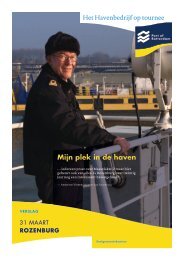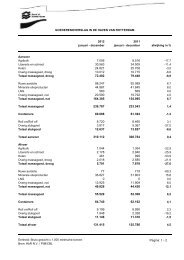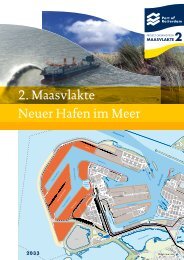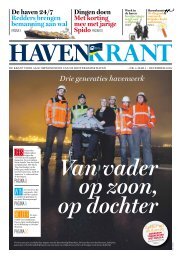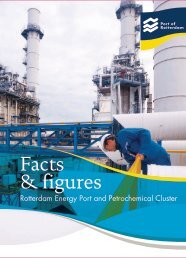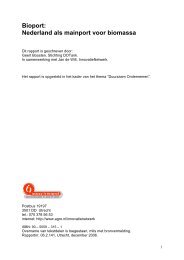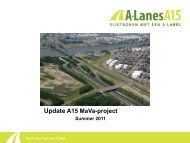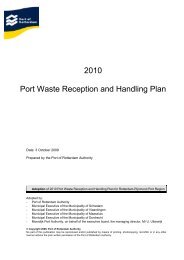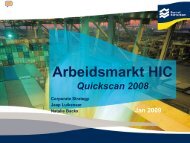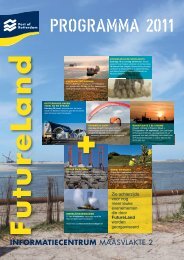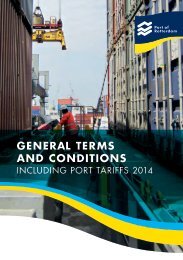PATHWAYS TO A CIRCULAR ECONOMY - Port of Rotterdam
PATHWAYS TO A CIRCULAR ECONOMY - Port of Rotterdam
PATHWAYS TO A CIRCULAR ECONOMY - Port of Rotterdam
Create successful ePaper yourself
Turn your PDF publications into a flip-book with our unique Google optimized e-Paper software.
Our model is based on growing the use <strong>of</strong> bio-basedfeedstocks in PET plastic packaging from 1 percent to 5percent within three to five years, and radically increasingthe high-grade recycling <strong>of</strong> plastic packaging (see Figure 7).The <strong>Rotterdam</strong>/Delta region is well placed to support thedevelopment <strong>of</strong> a circular economy model for plasticpackaging. It is home to significant fossil fuel and chemicalsindustries, and to a number <strong>of</strong> ethanol plants, which couldbe used as a building block for a bio-based substitute forPET, polyethylene furanoate or PEF. The ports are alsotransport hubs for bio-based commodities.The pathway to a circular economy in the chemicalssector model is at stage 3 in the evolutionary model: anincreasing percentage <strong>of</strong> plastic packaging is being recycledfor higher value applications, creating the basis for a circularmodel. At the same time, new chemical and/or thermaltreatment <strong>of</strong> plastics open up new markets and createsnew bio-based alternatives with higher values.The model is supported by some industry forecasts. Globalbio-based plastic production is expected to grow from700 thousand tonnes in 2010 to 1.7 million tonnes in 2015(European Bioplastics). This would account for almost5 percent <strong>of</strong> global production. Most <strong>of</strong> this growth is tocome from non-biodegradable bio-based plastics as thesecan be processed by existing packaging machinery. At thesame time, new recycling technologies that can separatespecific components <strong>of</strong> the material in pr<strong>of</strong>itable ways willincrease the overall amount <strong>of</strong> plastics recycled, and willdecrease the share <strong>of</strong> plastics recycled into lower-gradeapplications at the benefit <strong>of</strong> higher grade uses.The circular economy model for plastic packaging in thechemicals sector shows abundant opportunities for plasticbottles/packaging to be produced in line with the circulareconomy principles:• Minimise the use <strong>of</strong> inputs and eliminate wastesand pollution: Oil consumption is reduced by usingrenewable bio-based resources.The model also aims forhigher collection and recycling rates, therefore reducingincineration and landfilling as well as accumulation inthe environment.• Maximise the value created at each stage: This will belargely achieved by breaking down recycled plastics intomore valuable components and resources.50/73PORT OF ROTTERDAM / RABOBANK<strong>PATHWAYS</strong> <strong>TO</strong> A <strong>CIRCULAR</strong> <strong>ECONOMY</strong>



